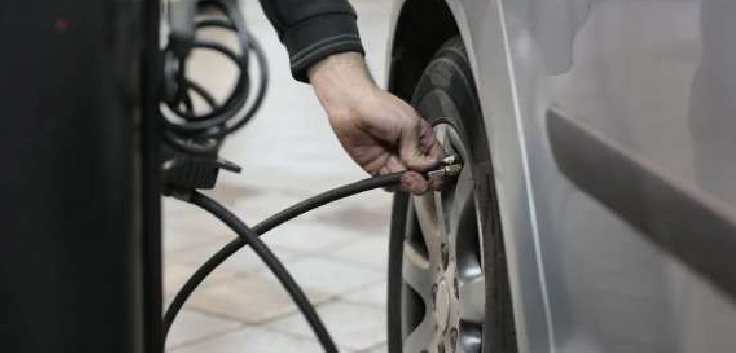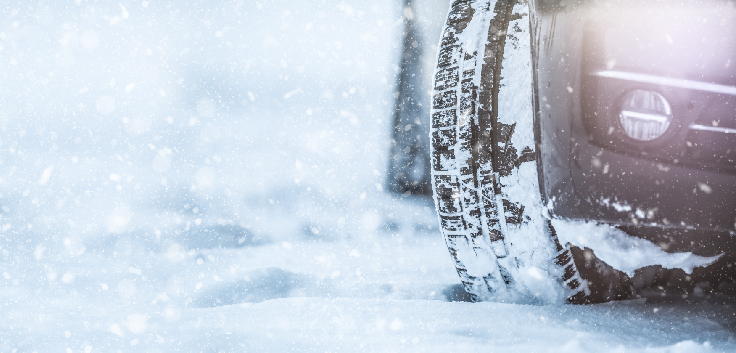Width
Current Selection:
Make
Current Selection:

The Importance Of The Right Tyre Pressure
Some people see tyre pressure as something that should be adjusted only when it is too low – or when their tyres are deflating.
However, the importance of tyre pressure goes way above this. The truth is, in the rush of our daily lives, it is quite easy to forget the well-being of your tyres. Overlooking them for too long would mean a potential trouble on the road and a risk on your and the lives of the other passengers.
Basically, there are so many reasons why your car should always have the right tyre pressure. Most important of all is the fact that with it, your car’s weight can be evenly distributed so that the tyres – and the vehicle itself – is stable and safe. Whenever a tyre is overinflated or underinflated, it would lose stability and would negatively affect your handling, cornering and stopping.
Quick Facts About Tyre Pressure In Cars
Before we move to the part where we tell you why monitoring your tyre pressure is important – and how to do it – let’s just share some of the most important facts about tyre pressure. What you need to know is the following:
- Incorrect tyre pressure not only makes it difficult to brake and handle – it also makes your car unstable and unsafe on the road
- Tyres with high pressure are not having enough grip on the road – something that leads them to drive violently when passing over bumps and potholes.
- High pressure equates less traction, which influences the responsiveness of your vehicle.
- Low pressure, on the other hand, means that too much of your tyre’s surface will touch the ground which means that your tyre can heat up and could lead the tread to wear out quickly.
- The safest option is to stick to the tyre pressure level advised by your car manufacturer.
- Considering the risks it poses, we recommend checking your vehicle’s tyre pressure every week. In modern cars, there are indicators which alert you if the tyre pressure (on some of your tyres) has deflated.

Source: TyreSizeCalculator.com
As you already know from the part above, underinflation and overinflation are two things you should always consider when checking your tyre pressure.
Basically, you should know that even a 20% underinflation of your tyres can reduce its lifespan by 18%. Similarly, overinflation of 20% can also reduce the lifespan of your tyres by 18%. So, either way you look at these, there is no middle ground – meaning that your car’s tyres should always be inflated according to advice or information from the car manufacturer (or your professional tyre expert).
The graph below can help you visualize this in detail.

Tyre Pressure In Cars: How To Set Up The Right One For Your Vehicle?
People have a lot of questions when trying to understand the right tyre pressure for their car.
This is nothing strange, though. Today, there are so many different types of tyres in UAE and so many different vehicle models, each requiring a specific set of tyres. Our team at TyresOnline hears a lot from drivers who ask if they should be inflating their tyres based on the maximum PSI, or how to do it in the most optimal way possible.
If you want a smooth and safe ride on your vehicle, you need to invest in long-lasting tyres and find the right pressure for your vehicle. But how do you do that?
Over-inflation Vs. Under-inflation: Why Both Are Problematic?
First of all, you should know that both over-inflated and under-inflated tyres are problematic and can shorten your tyre life.
Here, over-inflation reduces the cushioning power of your tyres and makes your car more unstable on bumps. Similarly, under-inflated tyres cause excessive flexing of the tyres’ sidewalls which is again a damage that leads to overheating and ultimately, causing break-up and tread separation.
The vehicle manufacturers usually recommend the right Pound Per Square Inch (PSI) as the value that is optimal for your car considering different factors, including:
- The weight of the load you are carrying
- Optimal ride comfort, safety and performance
- Optimal fuel economy
So, probably the first place to check for your car’s recommended PSI value is your car’s booklet. If you can’t find anything, try locating the stickers that are (potentially) added within your car’s door frames (just like the image below).
Note: Make sure to understand that the sticker may include information about the factory tyres for your car. For instance, if you are driving a Volkswagen Golf, the factory tyres are 15” or 16”. However, if your car has 17” on it, the values you need to look for and adjust are different.

Source: Cars.com
Once you see this, it is time to understand these values, which brings us to the next part.
The Recommended Tyre Pressure By Your Car Manufacturer
One of the best ways to check the right tyre pressure for your vehicle is to go to Google and enter the information such as your vehicle model and the size of your tyres.
However, you may see many results showing you different things, which is why you need to check with your tyre dealer in UAE and always adjust your tyre pressure based on their advice.
Tyre pressure is measured in either bar or PSI. Below, we are sharing a table where you can convert the values based on what you see on your tyres or what you see at the gas station when you are trying to inflate or deflate them.
| BAR | PSI | BAR | PSI | BAR | PSI | BAR | PSI | BAR | PSI |
| 1.30 bar | 17 psi | 1.90 bar | 27 psi | 2.60 bar | 37 psi | 3.25 bar | 47 psi | 3.95 bar | 57 psi |
| 1.35 bar | 18 psi | 1.95 bar | 28 psi | 2.65 bar | 38 psi | 3.30 bar | 48 psi | 4.00 bar | 58 psi |
| 1.40 bar | 19 psi | 2.00 bar | 29 psi | 2.70 bar | 39 psi | 3.40 bar | 49 psi | 4.10 bar | 59 psi |
| 1.45 bar | 20 psi | 2.10 bar | 30 psi | 2.75 bar | 40 psi | 3.50 bar | 50 psi | 4.15 bar | 60 psi |
| 1.50 bar | 21 psi | 2.15 bar | 31 psi | 2.80 bar | 41 psi | 3.55 bar | 51 psi | 4.50 bar | 65 psi |
| 1.55 bar | 22 psi | 2.20 bar | 32 psi | 2.90 bar | 42 psi | 3.60 bar | 52 psi | 4.80 bar | 70 psi |
| 1.60 bar | 23 psi | 2.25 bar | 33 psi | 3.00 bar | 43 psi | 3.70 bar | 53 psi | 5.20 bar | 75 psi |
| 1.70 bar | 24 psi | 2.30 bar | 34 psi | 3.05 bar | 44 psi | 3.75 bar | 54 psi | 5.50 bar | 80 psi |
| 1.75 bar | 25 psi | 2.40 bar | 35 psi | 3.10 bar | 45 psi | 3.80 bar | 55 psi | 5.85 bar | 85 psi |
| 1.80 bar | 26 psi | 2.50 bar | 36 psi | 3.20 bar | 46 psi | 3.90 bar | 56 psi | 6.20 bar | 90 psi |
Tip From The Pros:
Make sure to check your tyre when it is cold (before driving your car). This way, you will make sure that the air pressure is right and prevent air expansion within the tyres. So, if you want to check the air pressure of your tyres, make sure to either do it at home or at the nearest gas station.
Final Words
As you can see from all we have written above, it is best to buy tyres in UAE that are recommended for your vehicle’s body and performance.
Once you do that, make sure to get in touch with your tyre dealer in UAE and get their advice on the recommended tyre pressure for your car.For more information on the right tyre pressure for your car or the right tyres for its weight and optim




The information below is required for social login